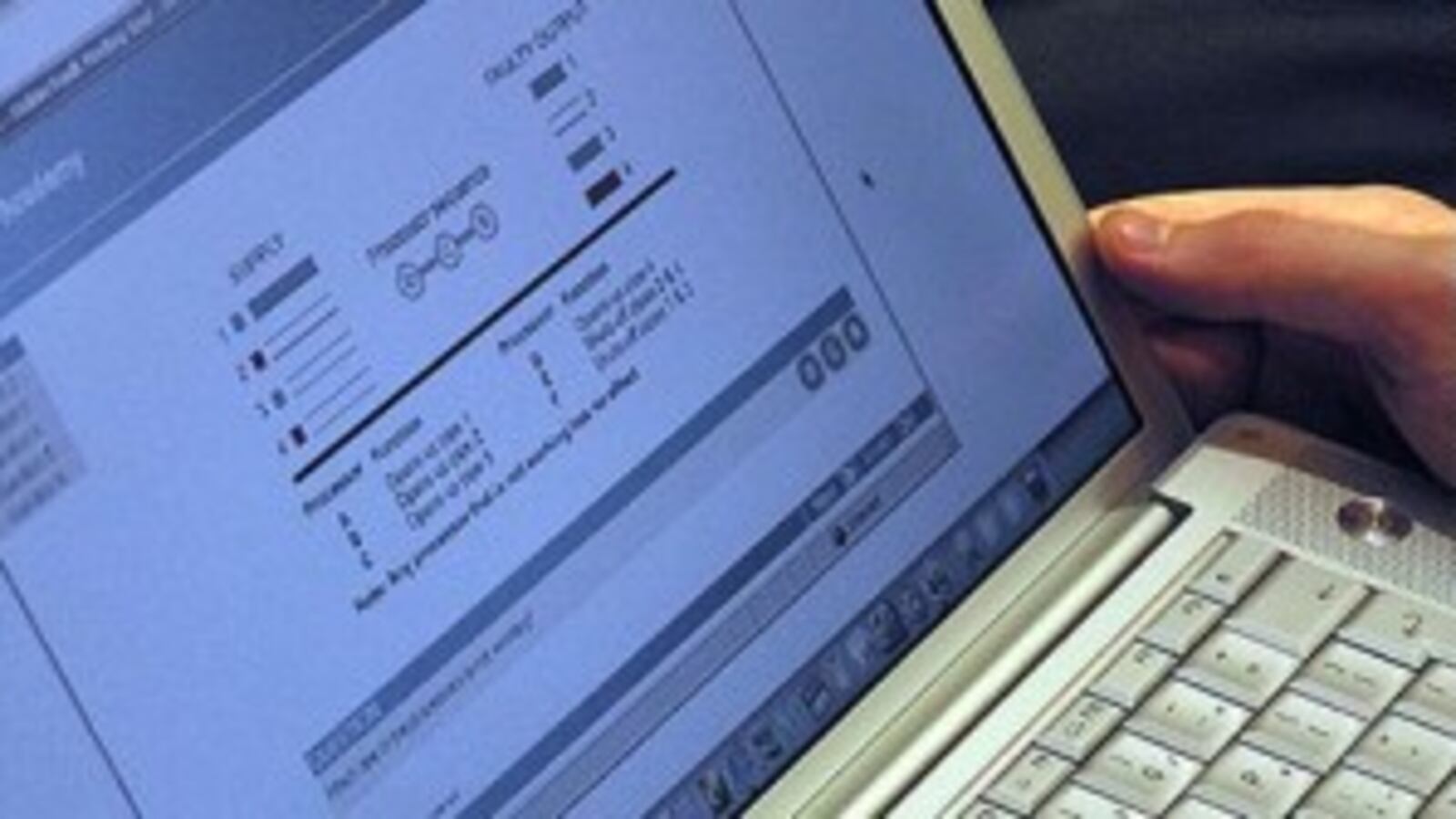The head of the company that created TNReady accepts blame for this year’s botched rollout of Tennessee’s new standardized online assessment, but says the subsequent delays in delivering printed testing materials were unavoidable.
Measurement Inc. president and founder Henry Scherich says Tennessee Education Commissioner Candice McQueen’s decision to scrap the online assessment on the first day of testing in February set in motion a chain of logistical quagmires that were impossible to overcome.
Once McQueen ordered districts to switch back to paper tests, his company found the sudden task of printing and delivering up to 5 million documents this spring overwhelming, if not impossible.

“I understand the frustration of superintendents and the state department,” Scherich said. “Having said all of that, this was a huge job that we took on and there’s been no testing company in the country — in the world, probably — who has taken on the task of printing and shipping this many tests in this short a period of time, and we really struggled with it.”
Last week, the Tennessee Department of Education informed district leaders that many of the testing materials wouldn’t arrive in time for the opening of this week’s final TNReady testing window — the latest in a series of delivery delays that has wreaked havoc in districts and classrooms across the state. State leaders placed the blame squarely on Measurement Inc.
In an interview this week with Chalkbeat, Scherich acknowledged that developing and delivering TNReady in a new online platform was the biggest job that his 36-year-old Durham, N.C.-based company has ever undertaken — perhaps too big given the one-year deadline.
He offered a behind-the-scenes look at the snafus and challenges. At the same time, he insisted that TNReady is a strong test and — once its delivery platform is fixed — the assessment can can help Tennessee reach its accountability goals.
Measurement Inc. won the bid to create Tennessee’s test for grades 3-11 math and English language arts in October of 2014, only months after a vote by the Tennessee legislature prompted the Department of Education to pull out of PARCC, a consortium of other states with a shared Common Core-aligned assessment. The company would have a year to develop a test for Tennessee. A small number of high school students on block schedules would take the test in the fall of 2015, with the bulk of students in grades 3-11 taking it the following spring.
TNReady marked an unprecedented shift for Tennessee and, like PARCC, was supposed to be online and aligned with the current Common Core State Standards.
"It was a failure in some respects because we were supposed to design a system that would take 100,000 students in at one time."
Henry Scherich
It was also an unprecedented task for Measurement Inc., which had never before developed and delivered a state’s entire online testing program.
But on Feb. 8, the very first day of statewide online testing, the test buckled as more and more students logged on. Even so, leaders of Measurement Inc. were surprised when McQueen quickly pulled the plug on the online assessment, and announced that the state would switch to paper-and-pencil versions.
Here’s what happened, according to Scherich:
Online ‘crash’
Scherich says that, first of all, the system never “crashed” on the first day. Students’ screens never went blank. Instead, he calls what happened “infrastructure saturation.” As more and more students logged on, their cursors began to spin, signaling that the test was taking longer to load than it should have.
What was the problem? Ultimately, Scherich says, there weren’t enough servers for the volume of students online, causing the system to clog up as more and more students logged in. He declined to speculate on how long it would have taken to fix the problem and add more primary servers, but said that it would have been possible to get back on track.
“We could have duplicated the system,” he said. “We would have said to half of the state, you work on these 64 servers and the other half work on another set.”
About 48,000 students logged on that day, and about 18,000 submitted assessments. It’s unknown the number of students who weren’t having troubles with the test, but stopped after McQueen sent an email instructing districts to halt testing.
“It was a failure in some respects because we were supposed to design a system that would take 100,000 students in at one time… We had a problem with 48,000,” Scherich said.
Printing delays
Scherich says the subsequent delays come down to this: There were a lot of tests to be printed, and not a lot of printers available on short notice. Overall, the switch to printing meant Measurement Inc. had to scramble to print answer sheets and test booklets for grades 3-11 amounting to 5 million documents — when only weeks before, they hadn’t planned on printing any.
"There’s been no testing company in the country — in the world, probably — who has taken on the task of printing and shipping this many tests in this short a period of time ..."
Measurement Inc. worked with the Department of Education to transfer different versions of the tests from computer to paper. Each test had several versions with different field test items embedded within.
“You can’t just push the button on the computer and have the test be printed out,” he said. “The formatting is all different.”
In the meantime, Measurement Inc. sought out printers who were able to fulfill the large order quickly. Through 36 years in testing, the company had a lot of connections, but only three printing plant operators said they were up to the task. Eventually, two backed out, leaving Measurement Inc. with one: RR Donnelley based in Chicago.
“It’s a large printing company, and they had plants all over the U.S. They printed one or more of the tests or the answer documents in 11 different printing plants around the country,” he said. “So we were getting tests from Minnesota, Missouri. They ran a lot of night shifts to do that for us.”
Once the tests and answer sheets arrived at Measurement Inc., they had to be sorted and distributed to schools. That’s 5 million tests, spread across nearly 1,000 schools.
The last documents arrived from the printer last Saturday, and Measurement Inc. is rushing to get them out in the next two to three days, Scherich said.
Tight timeline
Measurement Inc. had about a year to develop the test and roll out an online system for the entire state. In comparison, PARCC, the online assessment that Tennessee originally was slated to use, was developed in about five years.
Though Measurement Inc. had been working on its online platform for six years and used it previously in other states, including Tennessee for its writing test, the company had never before undertaken a state’s entire testing program.
Measurement Inc. not only developed the TNReady tests for math and English language arts, but also put the content for science and social studies on its online platform, known as MIST.
He said a lot was done right in developing TNReady, including the recruitment of 400 Tennessee teachers to help write test questions designed to measure critical thinking skills.
“I think that our staff and the state of Tennessee staff did an excellent job in building an assessment,” he said. “The math test is a good test. (English language arts) is a good test. Tennessee has a good catalog, a good library of test items for the future.”

